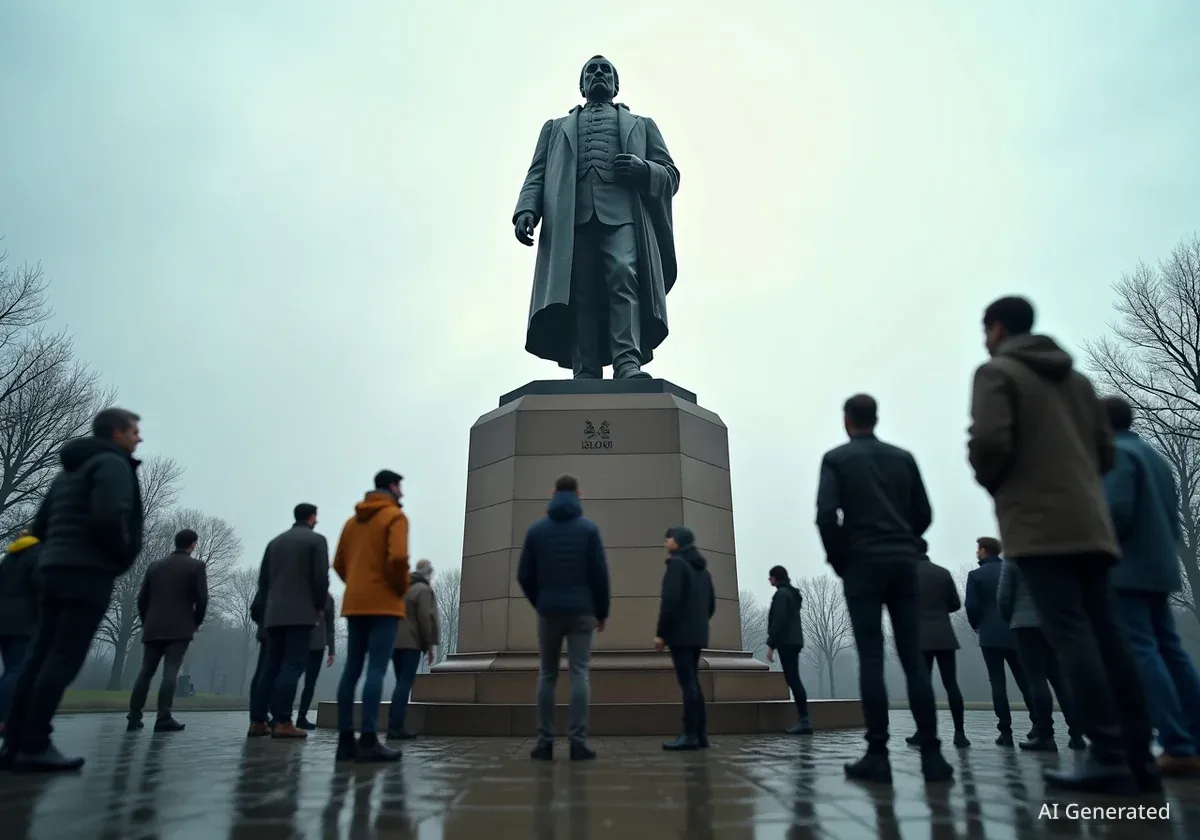A controversial statue of Confederate General Albert Pike, which was toppled and burned in Washington, D.C., in June 2020, has been reinstalled in Judiciary Square. The reinstallation occurred on Saturday, October 27, 2025, following a National Park Service announcement. This decision has reignited a long-standing debate within the nation's capital regarding historical monuments.
Key Takeaways
- Confederate General Albert Pike statue reinstalled in D.C.'s Judiciary Square.
- The statue was originally erected in 1901 and was toppled in 2020.
- National Park Service cited federal preservation laws for the restoration.
- D.C. Delegate Eleanor Holmes Norton strongly opposed the reinstallation.
- Pike is the only Confederate general honored with a monument in Washington, D.C.
History of the Albert Pike Monument
The monument dedicated to Albert Pike was first erected in 1901. It stands as the only monument in Washington, D.C., honoring a Confederate general. The statue's plaque, originally placed by the Freemasons, describes Pike as an "author, poet, scholar, soldier, jurist, orator, philanthropist and philosopher." Notably, it omits any mention of his Confederate military history.
Did You Know?
- Albert Pike was a Freemason.
- He received a pardon from President Andrew Johnson.
- Historians suggest his possible involvement in the early Ku Klux Klan.
During the Black Lives Matter movement in June 2020, protestors pulled down the statue and set it on fire. This act highlighted the deep divisions over public monuments that honor figures associated with the Confederacy and slavery.
National Park Service Justification
The National Park Service (NPS) announced its intention to restore and reinstall the bronze statue on August 4, 2025. In a statement, the NPS explained that the restoration aligns with federal responsibilities under historic preservation law. They also cited recent executive orders aimed at beautifying the nation's capital and restoring existing statues.
"The National Park Service announced on Aug. 4, 2025 that it will restore and reinstall the bronze statue of Albert Pike, which was damaged and vandalized during the Black Lives Matter riots in June 2020. The restoration aligns with federal responsibilities under historic-preservation law and recent executive orders to beautify the nation's capital and restore pre-existing statues."
The NPS views the events of 2020 as "riots" that damaged federal property. Their decision underscores a federal commitment to maintain historical structures, even those that have become subjects of intense public debate.
Strong Opposition from D.C. Officials
The reinstallation has drawn significant criticism, particularly from D.C. Delegate Eleanor Holmes Norton. She released a statement on Monday, expressing strong objections to the monument's return. Norton emphasized that the statue is an "affront" to the mostly Black and Brown residents of the District of Columbia.
Background on the Debate
Calls for the removal of the Pike statue date back decades. Members of the D.C. Council, the district's legislature, have been advocating for its permanent removal since 1992, highlighting its contentious nature within the community.
Delegate Norton also pointed to Pike's controversial military record. She described his service as "dishonorable," citing accusations of misappropriating funds and being imprisoned by his own troops. According to Norton, Pike resigned in disgrace after committing a war crime.
"Pike himself served dishonorably. He took up arms against the United States, misappropriated funds, and was ultimately captured and imprisoned by his own troops," Norton stated. "He resigned in disgrace after committing a war crime and dishonoring even his own Confederate military service. Confederate statues should be placed in museums as historical artifacts, not remain in parks or other locations that imply honor. Pike represents the worst of the Confederacy and has no claim to be memorialized in the Nation's capital."
In August, Delegate Norton introduced a bill aimed at permanently removing the Albert Pike statue. This legislative effort reflects the ongoing struggle between federal preservation mandates and local community sentiments.
The Future of Confederate Monuments in Public Spaces
The reinstallation of the Albert Pike statue highlights a broader national discussion about how historical figures, particularly those associated with the Confederacy, should be commemorated in public spaces. Many argue that such monuments glorify a past of racial oppression and division.
Conversely, some advocate for the preservation of these statues as part of historical record. They believe that removing them erases history, rather than contextualizing it. The Pike statue represents a complex intersection of history, public memory, and federal authority.
The decision by the National Park Service to restore and reinstall the statue underscores the federal government's role in managing historical assets in the nation's capital. This action, however, continues to be a point of contention for many residents and elected officials in Washington, D.C. The debate over the statue's presence is likely to persist as the community grapples with its historical significance and its place in modern society.





